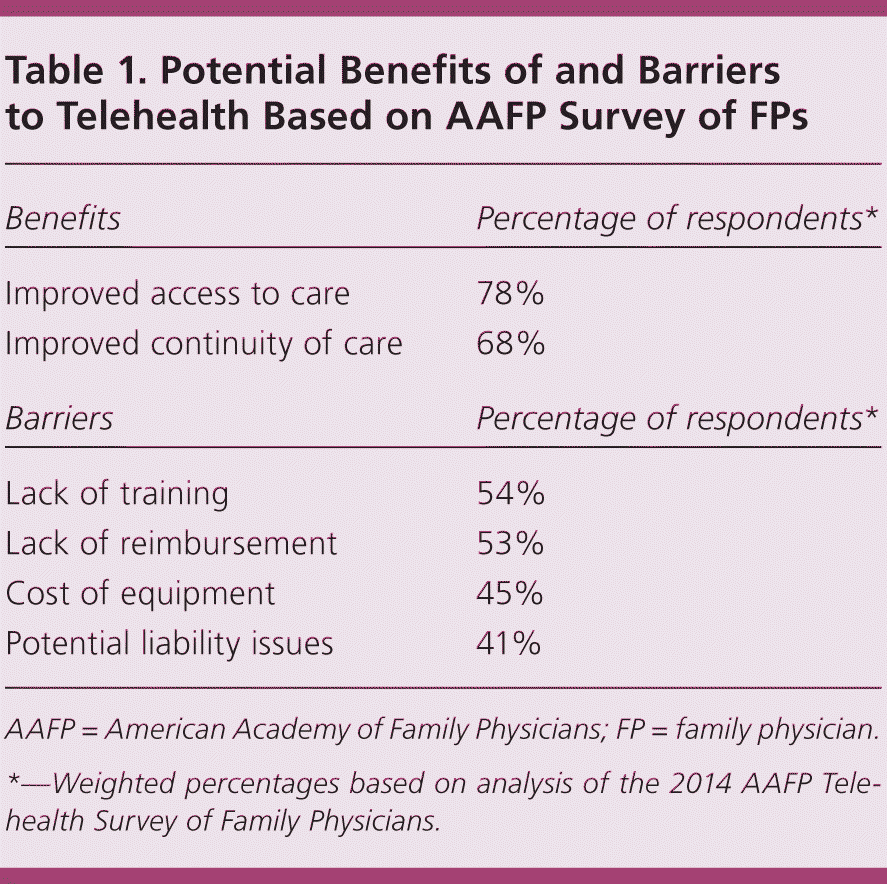
Am Fam Physician. 2016;93(2):101
In a 2014 national survey, only 15% of responding family physicians (FPs) reported using telehealth in the previous year, even though most agreed that telehealth could improve access to and continuity of care for their patients. More than one-half of FPs identified lack of training and reimbursement as key barriers to adoption of telehealth, with more than 40% noting the cost of technology and liability issues as additional barriers.
Telehealth (the use of medical information exchanged from one location to another via electronic communications to improve a patient's health) has been suggested as a way of improving patient access,1 increasing continuity of care,2 and improving health outcomes3 by extending hours and convenience of care, monitoring and engaging patients remotely, and facilitating specialty consultations.4 However, little is known about primary care clinicians' implementation of, awareness of, and attitudes toward telehealth.
In 2014, the American Academy of Family Physicians (AAFP) surveyed 5,000 randomly selected physician members listed in the 2014 American Medical Association Physician Masterfile, receiving 1,557 responses (31%) from FPs.5 After weighting the sample to ensure the estimates computed were representative of FPs across the United States, only 15% of FPs reported using telehealth services in the previous 12 months. On a five-point Likert scale, most FPs agreed or strongly agreed that telehealth improves access to care (78%) and improves the continuity of care (68%) for their patients. FPs indicated that lack of training (54%), lack of reimbursement (53%), cost of equipment (45%), and potential liability issues (41%) are barriers to the use of telehealth. The benefits and barriers to telehealth based on this AAFP survey are listed in Table 1.

Telehealth use is in the early stages of adoption. Many of the barriers to wider adoption may be addressed by policy changes. Strategies to address the top two barriers identified by this survey include health care stakeholders offering new opportunities for training in the use of telehealth services and payers increasing awareness of their current reimbursement for telehealth services, as well as developing new ways to reimburse the services.
The information and opinions do not necessarily reflect AAFP views.
This series is coordinated by Kenny Lin, MD, MPH, Associate Deputy Editor for AFP Online.
Author disclosure: No relevant financial affiliations.
